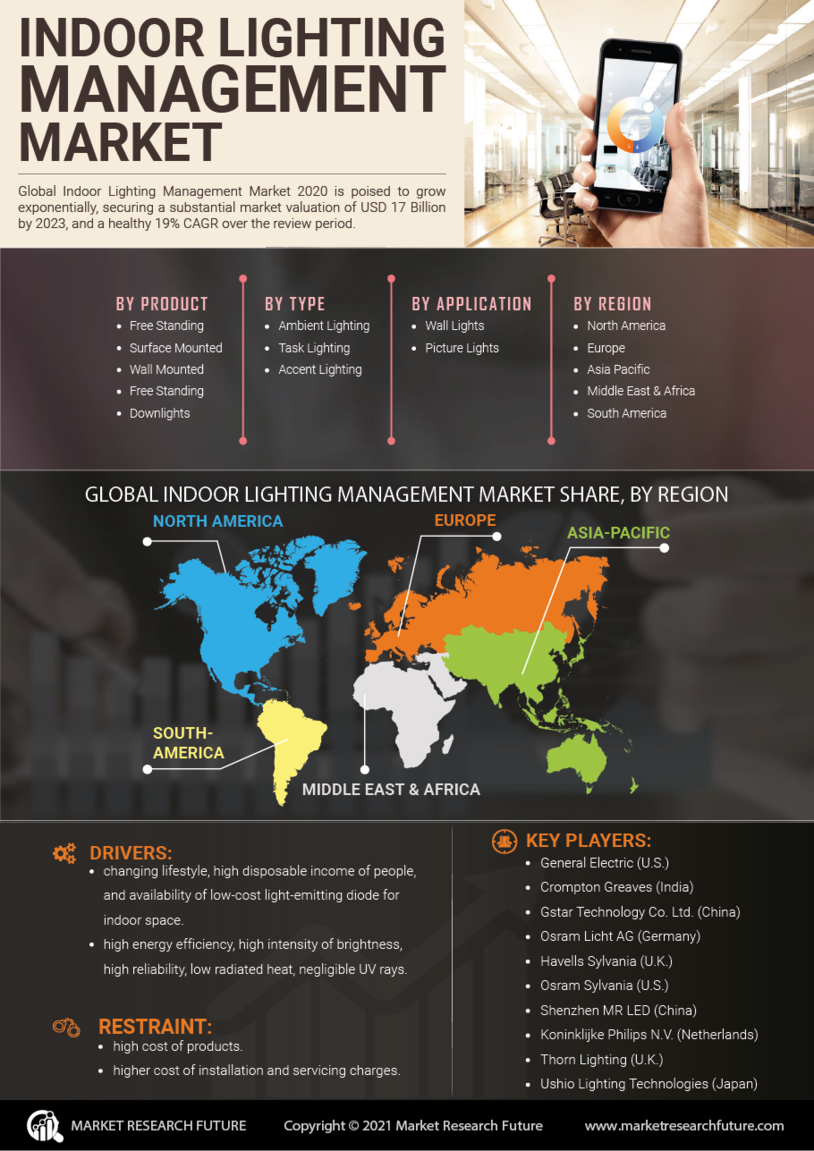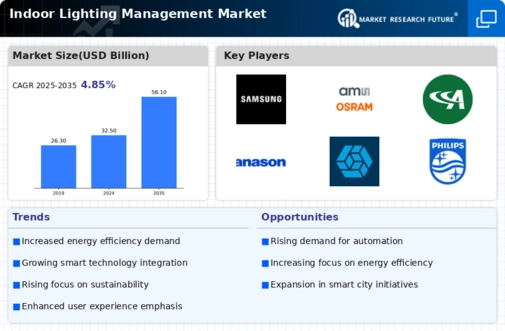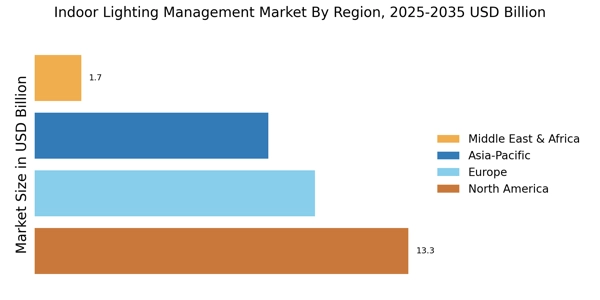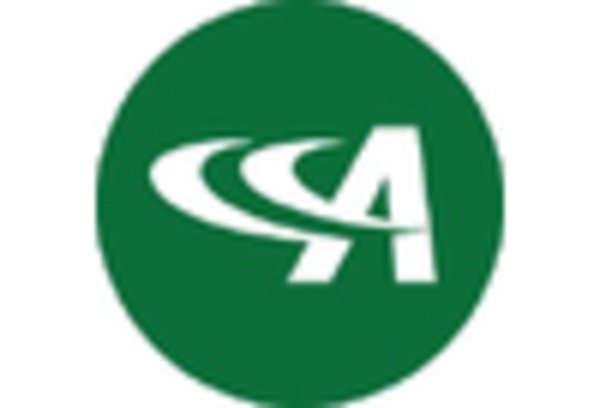Integration of IoT Technologies
The integration of Internet of Things (IoT) technologies into the Indoor Lighting Management Market is transforming how lighting systems are controlled and monitored. IoT-enabled lighting solutions allow for real-time data collection and analysis, enabling users to optimize energy consumption and enhance user experience. According to recent estimates, the adoption of IoT in lighting management could lead to energy savings of up to 30%. This trend is particularly appealing to commercial spaces, where operational costs are a significant concern. As businesses increasingly seek to leverage smart technologies, the demand for IoT-integrated lighting solutions is expected to rise, driving growth in the Indoor Lighting Management Market.
Advancements in Lighting Control Systems
Advancements in lighting control systems are significantly shaping the Indoor Lighting Management Market. The emergence of sophisticated control technologies, such as dimming systems, occupancy sensors, and automated controls, enhances the functionality and efficiency of lighting systems. These innovations allow users to tailor lighting conditions to specific needs, improving comfort and productivity. Market data suggests that the smart lighting control segment is anticipated to grow at a compound annual growth rate (CAGR) of over 20% in the coming years. This growth indicates a strong shift towards more intelligent and responsive lighting solutions, further driving the Indoor Lighting Management Market.
Increased Focus on Aesthetics and Design
The increased focus on aesthetics and design in the Indoor Lighting Management Market is reshaping consumer preferences. As interior design trends evolve, consumers are seeking lighting solutions that not only provide functionality but also enhance the overall ambiance of their spaces. This trend is particularly evident in residential markets, where decorative lighting fixtures and customizable options are gaining traction. The demand for aesthetically pleasing lighting solutions is expected to drive innovation among manufacturers, leading to the introduction of new designs and technologies. Consequently, this focus on aesthetics is likely to contribute to the growth of the Indoor Lighting Management Market.
Regulatory Support for Sustainable Practices
Regulatory support for sustainable practices is increasingly influencing the Indoor Lighting Management Market. Governments worldwide are implementing stringent regulations aimed at reducing carbon emissions and promoting energy efficiency. For instance, various countries have introduced incentives for adopting energy-efficient lighting solutions, which encourages both residential and commercial sectors to invest in advanced lighting technologies. This regulatory landscape is expected to foster innovation and competition among manufacturers, leading to the development of more efficient and sustainable lighting products. As a result, the Indoor Lighting Management Market is likely to experience accelerated growth driven by compliance with these regulations.
Growing Demand for Energy-Efficient Solutions
The growing demand for energy-efficient solutions is a primary driver in the Indoor Lighting Management Market. With rising energy costs and increasing environmental awareness, consumers and businesses are actively seeking ways to reduce their energy consumption. Energy-efficient lighting systems, such as LED technology, have gained popularity due to their lower energy usage and longer lifespan. Reports indicate that The Indoor Lighting Management Market is projected to reach USD 100 billion by 2025, reflecting a significant shift towards energy-efficient lighting. This trend not only contributes to cost savings but also aligns with sustainability goals, further propelling the Indoor Lighting Management Market.

















Leave a Comment